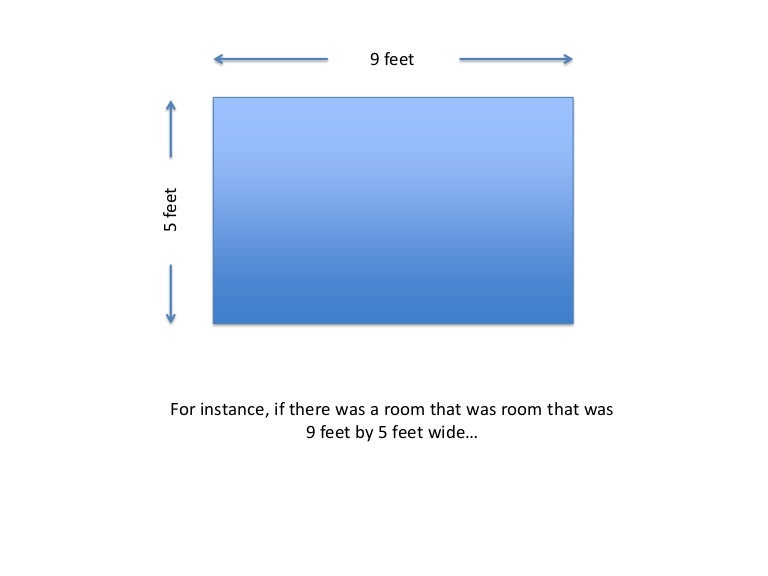

Knowing the length and width of a rectangle, we can now get the perimeter of a rectangle. The path he walks around from the starting point and back is the perimeter. Take a look at the image below, a person is walking around the box. When multiplied, you will get 35 as your area. The given length ( L) is 7 and 3 is the width ( W). Example 1Ĭalculate the area of a rectangle that has a length of 7 centimeters and a width of 5 centimeters.Ī = 35. We can get the area of a rectangle by following this formula:Ī is the area, L is the length, and W is the width. To find the area of a rectangle you need to multiply the length and the width of a rectangle. This diagram displays the width, length, and area of a rectangle: The space inside a two-dimensional shape is the area or the amount of covered shape.

The rectangle below has a covered area of 12 “square units” Imagine the area of a rectangle as boxes inside a rectangle. Real-life application in calculating the area, perimeter, and diagonal of a rectangle Area of a Rectangle
#Rectangle area finder how to#
How to calculate the area, perimeter, and diagonal of a rectangle? What is the area, perimeter, and diagonal of a rectangle? This page will show you how to deal with measuring the area of a rectangle. A great feature of the calculator is that you can find either the length or the width if you know the perimeter and the length of one of the sides.Īrea, Perimeter, and Diagonal of a Rectangle
#Rectangle area finder free#
These examples illustrate how to calculate the area, perimeter, and diagonal of a rectangle manually, but if you prefer to use the calculator for quicker results or to merely check your work, then feel free to do so. Take the square root of both sides and the diagonal d is approximately 7.2 inches To find the diagonal using the same dimensions: The perimeter is 2 a + 2 b, so in this example the perimeter Using the same dimensions, we can calculate the perimeter. Suppose the length is a = 6 inches and the width is b = 4 inches Perimeter (distance around the outside of the rectangle) = a + a + b + b or 2 a + 2 b and is noted as (P)ĭiagonal is d² = a² + b² which is the Pythagorean Theorem (see our Pythagorean Theorem calculator).Įxample of calculating the area of a rectangle:

Here are the basic formulas used by the calculator. The diagonal, which goes from one vertex to the opposite vertex cutting the rectangle into two squares, is called the diagonal and noted as d. The lengths of the sides will be given as a or b or you can use l and w for “length” and “width”. If the lengths of the sides are all the same, then the rectangle is also a square. But you can stick around here and learn more about finding the area of a rectangle.Ī rectangle has four 90 degree angles. If interested in calculators for a variety of other shapes, you can look at more of our handy calculators. If you need to find the area and perimeter of a rectangle, this calculator is the handy tool you will need.īy simply inputting the length and width, this calculator will almost instantly find the perimeter (P) and the area (A). Go back to Calculators page How to Calculate the Area of a Rectangle Jump to Real-life Applications of these Calculations Jump to Calculating the Diagonal of a Rectangle Jump to Calculating the Perimeter of a Rectangle You can find the workspace I built here on Github.Jump to Calculating the Area of a Rectangle We just use it as a clip boundary against the original feature and voila: I notice it's not quite what we might expect - because in some cases, it extends outwards too and comes out as a polygon, not a triangle - but it seems to do the trick in all of the examples I've tried. Then do an intersection and build areas out of what is left: basically, chop everything into two-point lines and extend them far enough to create the triangle shape: It looks to me as if you can take the right-angled triangles and cut them out of the original, then you'll have what you need: If you create a bounding box and cut out the main polygon, you get this: Having said that, I think we can improve on what you have.

There are proper algorithms for this sort of thing (look up "largest rectangle in orthogonal polygon") but unfortunately there isn't any implementation inside FME. Well, I think there are better ways, but better is usually more complex because you're trying to cover all the bases.


 0 kommentar(er)
0 kommentar(er)
